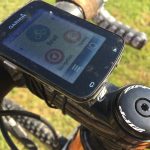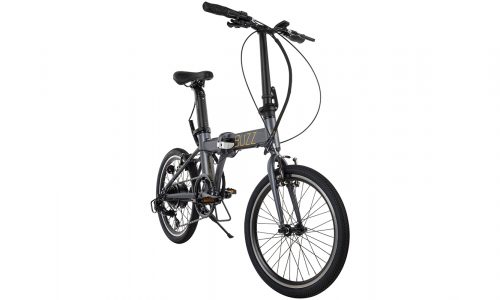Home » Gear Reviews » Biking » Bike Computers » Sigma ROX 10.0
Sigma ROX 10.0 Review
October 23, 2016

















 85
85 The Good
- Light weight and compact
- Lots of data options
- Inexpensive for navigation-capable computer
The Bad
- Some screens much too dim
- Ultra-stiff buttons
- No upcoming turn notification
Highly compact and relatively inexpensive, the Sigma ROX 10.0 and its accompanying Sigma Data Center program offer a lot of bang for the buck, including excellent route planning and basic navigation, plus loads of data options including multiple power and heart rate settings. On-the-fly readings were quick to update and stayed very accurate throughout. However the buttons were the hardest to push of all the units, and often took multiple attempts to engage. Plus the screen is far too dark on the settings pages making it almost impossible to read.
Functionality
For its size the amount of data options on the Sigma ROX 10.0 is quite impressive: It offers 87 total readout options on up to six windows on each of its 10 training screens, with multiple power options including different averages, maximum and target zones, plus a similar array of heartrate readings. And for riders who love to climb there are lots of altitude options as well including graphic altitude readouts. Some of these can even be accessed during a training session, although we always prefer full adjustability during a workout.
GPS and Navigation
Unless you rely heavily on route mapping and navigation, and/or travel to and ride in new places frequently, the basic arrow-on-a-line navigation on the Sigma ROX 10.0 was more than enough to explore new roads and routes. While no maps or turn-by-turn directions are available, the zoom on the “black line” navigation is perfectly set to provide plenty of notice when a turn is coming, and the tracking arrow was always accurate and never let us lose our way. After a turn the route adjusted quickly to its “always up” orientation, even on successive turns with little distance between them. The small screen is not an issue here, and there’s even room to display current speed and distance. Plus, unlike many units, the navigation screen is available on other screens, so you can have full training data while also viewing your route in one of the windows, and a riders can begin following a track during a workout without stopping the recording.
User Friendliness
We found the Sigma ROX 10.0 well designed for the average user, with intuitive, easy-to-navigate programing and operation. The buttons were located in ergonomic positions, with an intuitive arrangement, and commands were generally easy to find and navigate. And unlike many, some key training data are accessible and changeable on the fly, although it requires a simultaneous 2-button press (rather than the easier and more common press-and-hold of one button). However the buttons on the unit are extremely hard to depress, and testers got frustrated with the multiple pushes needed to execute commands. One-finger touch is not an option, and this can be a pain on the fly.
Display and Battery
With only a 1.7” LCD display, the Sigma ROX 10.0 has the smallest screen in the group, which helps battery life but limits data views. However, it packs a lot into the small screen, allowing up to six data windows per readout screen, which are somehow still readable even on the fly—but we’d recommend using a maximum of four at once for better viewing. The contrast and lines are sharp and the numbers and icons clearly defined. While the backlight doesn’t seem to help much—which might be a problem in heavy shadows or low-light riding—it doesn’t affect visibility considerably. Where the screen falls quite short however, is on the settings screens—these are very dim, small and hard to read. Battery life is excellent as mentioned above, and can last up to 13 hours while using normal GPS according to the manufacturer and that’s what we got on our test, with the GPS and navigation running and backlight on. Ultra-distance riders are encouraged to turn off the backlight and set GPS to saver mode for even more life.
Online Training Support
Sigma’s training program is Sigma Data Center 4.0, and comes complimentary with the ROX 10.0 (although not with all Sigma computers). We found this a solid platform with multiple training options and decent data for workout analysis. Users can plan courses and training programs, view typical workout data, and track improvements over weeks or months graphically, along with other information. It’s not as user-friendly as others, and took a bit of learning to get started, and we also found it a bit glitchy at times. But our biggest complaint is users need to upload a route to the Data Center and then sync with the ROX to load a new track—drag and drop is not an option.
Scott Boulbol
- FacultyBoulbol wrote the book on trail running in Colorado.Scott Boulbol is a freelance writer who has been working in the outdoor and cycling industries for about 15 years. He lives near Boston.


















